We just had our annual Multi-club Picnic and Auction here in Central Florida (I like to call it the Auction of the Five Clubs, á la Tolkien )
As has become my tradition, I tend to buy a tree from a friend, Gail, before the auction begins. I know, it’s not fair, but rank hath it’s privileges. And she has some cool trees. I’ve gotten a sweet Raintree, an interesting dwarf Barbados cherry, and here is the tree I got this year.
A sweet willow leaf ficus. 
Normally, I would leave the tree alone until next year, this being Fall and all (fall is what we in North America call autumn, to translate for the rest of the English speaking world. It’s easy to figure out why we call the third season of the year “fall”, as the leaves fall off the trees at this time. It’s also when apple cider was beginning to become fermented, so the farmers started to tumble and fall, but to understand why it’s called “autumn” we must go back to the ancient Etruscans, as the root comes from them: autu- . To them, it was the passing of the year or, if one etymologist is correct, the original was auq- as the root, which had connotations of the year “drying up”. In Latin it was autunmus, or auctumnus. Which might suggest the “drying up” theory. From there there’s a French and old English variation of autumn. But many people in medieval times just called the season “Harvest”. )
Anyway, whatever you call it, it’s not the best time to repot a ficus in Florida.
Which is what I’m about to do. Into this pot. 
You see, my daughter wants me to help her complete a project in her photography class. The assignment is a lesson in the concepts of “rule of thirds” and “focal point”. Which is the combined shorthand version of what the eggheads call the “Fibonacci sequence”. A slightly complex mathematical equation that explains how the natural world grows. And why we are pleased by things exhibiting these concepts and tend to consider beautiful. Believe it or not, we use this in bonsai design as well.
First, she wanted me to go to a park and make a plein air landscape in oil, and she would photograph that, with me as focal point. I suggested we use me working on bonsai instead (the logistics of painting and the time frames involved made the landscape too difficult). I finally convinced her (she’s a tad stubborn, like her old man) but then she threw in “make sure we have some warm and cool colored pots so I can use the color wheel”
I tend toward brown pots, so I had to make a quick decision. I have this spectacular pot by my friend Guaracha …..
He gave it to me some time ago but I didn’t have the tree for it. It was too good a pot. 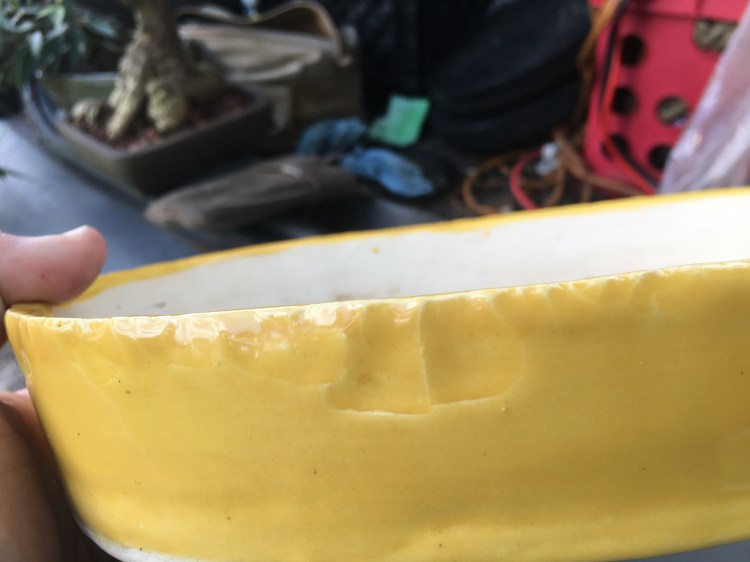 Isn’t that glaze awesome though?
Isn’t that glaze awesome though?
And his construction is tight. 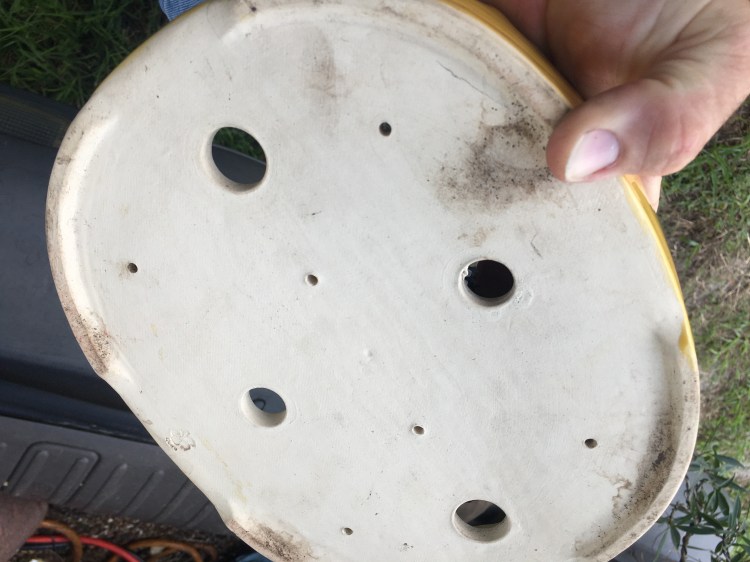
You can follow him on Instagram here. 
So I need to repot the tree into this new pot. Because it’s yellow and will contrast nicely with the blue sky.
I happen to be at my kids school (as often I am lately), awaiting their arrival and I have everything I need to repot. Unlike the last post on that hollow trunked tigerbark.
What I have for today is a lesson on the difference between a repot and, what I’m going to do here, a slip potting.
First, as always, prepare the pot for proper tree insertion.
There are big drainage holes that must be covered with mesh. The mesh you use, truth be told, can be everything from the official mesh they sell on the online stores, to a screen with a 1/8 hole, to even EGR valve intake screen that prohibits excess carbon from clogging the closure of the valve, causing an extremely rough idle and engine stalling.
But how one secures the mesh into the hole (and it must be secured or your soil falls out the bottom, and that’s just not cool) can only be done properly when done using my method, which I call the “improved cursive ‘L’ technique”.
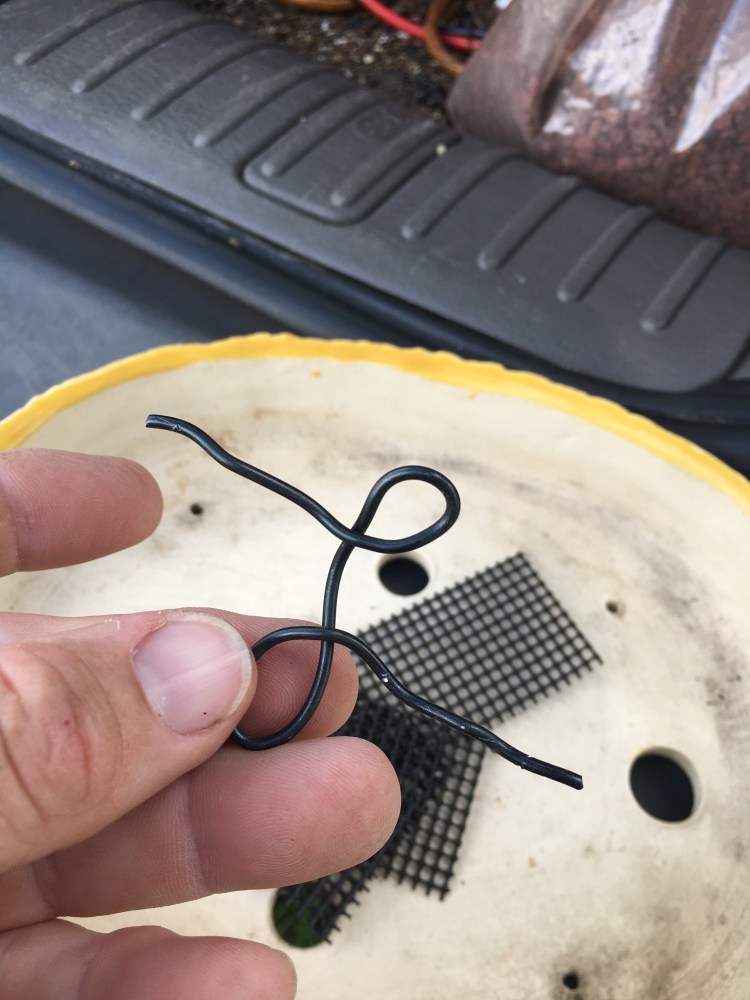
The “L” of course stands for my last name, Lavigne. 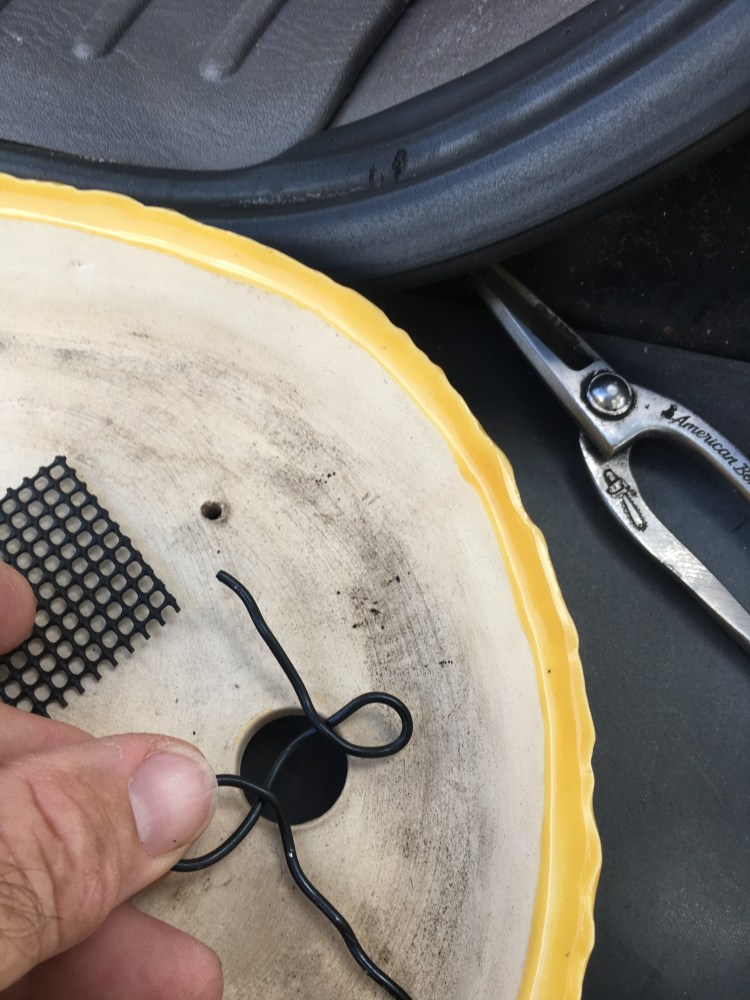
Make sure the loops occur on only one side of the twist, this is important. Twist it just as though you are drawing a cursive letter “L”. Now, I understand that many millennials were not taught how to write in cursive, so Here’s a YouTube video to teach you how. Go ahead, click on it, I’ll wait.
The improved part is that the loops occur on one side though, like below. And make sure the space between the loops is the same as the hole you are covering up, like the pic above. 
This pot has four holes, so it’s best to make four of these drainage hole mesh securing wire constructs. 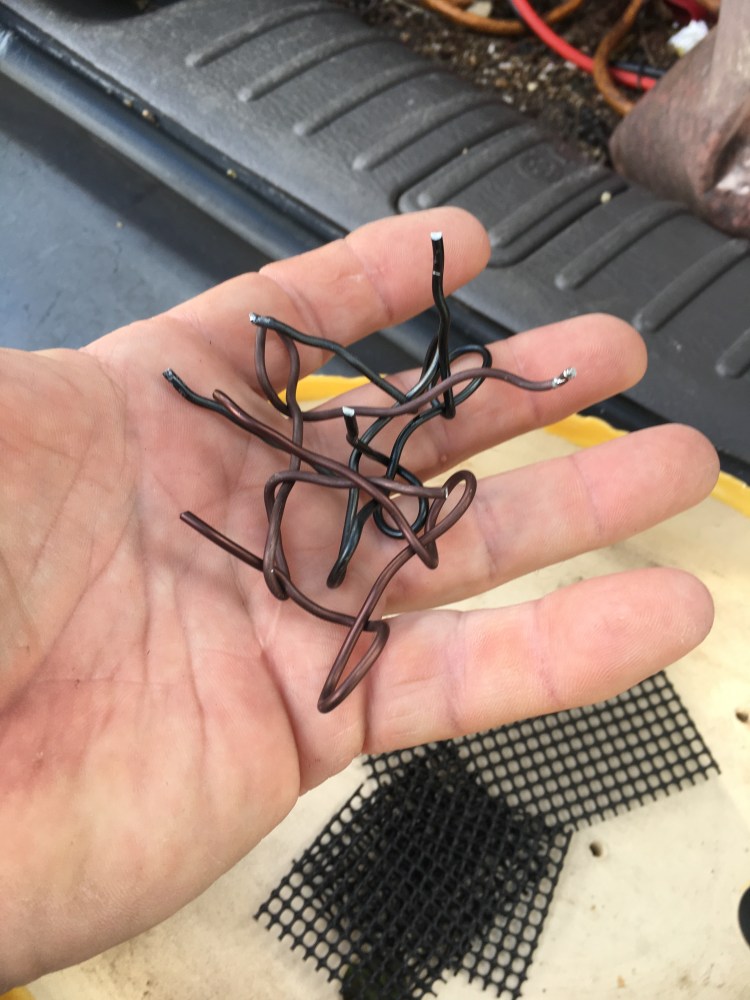
Make sure there are four of the square mesh pieces as well. , otherwise you’ll either have too many or not enough. That’s not good bonsai. 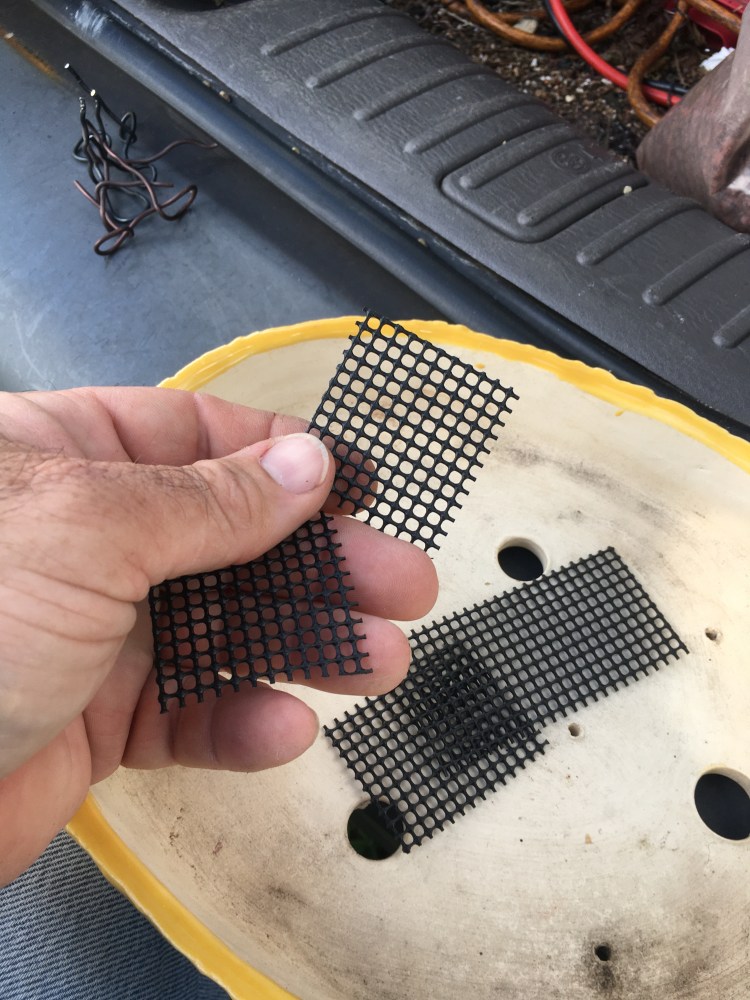
I use scissors to cut the mesh, but you can use what you’d like. This has no bearing on correct technique. 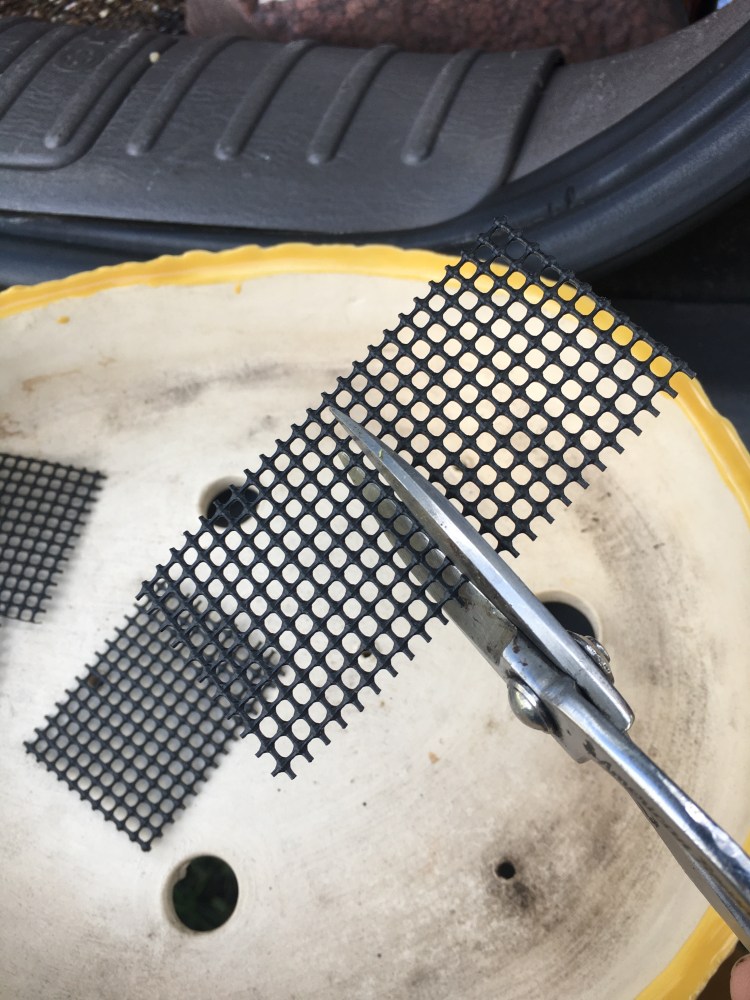
And there we go, four correctly covered drainage holes using the Adamaskwhy Improved Cursive ‘L’ Mesh Securing Method™️. 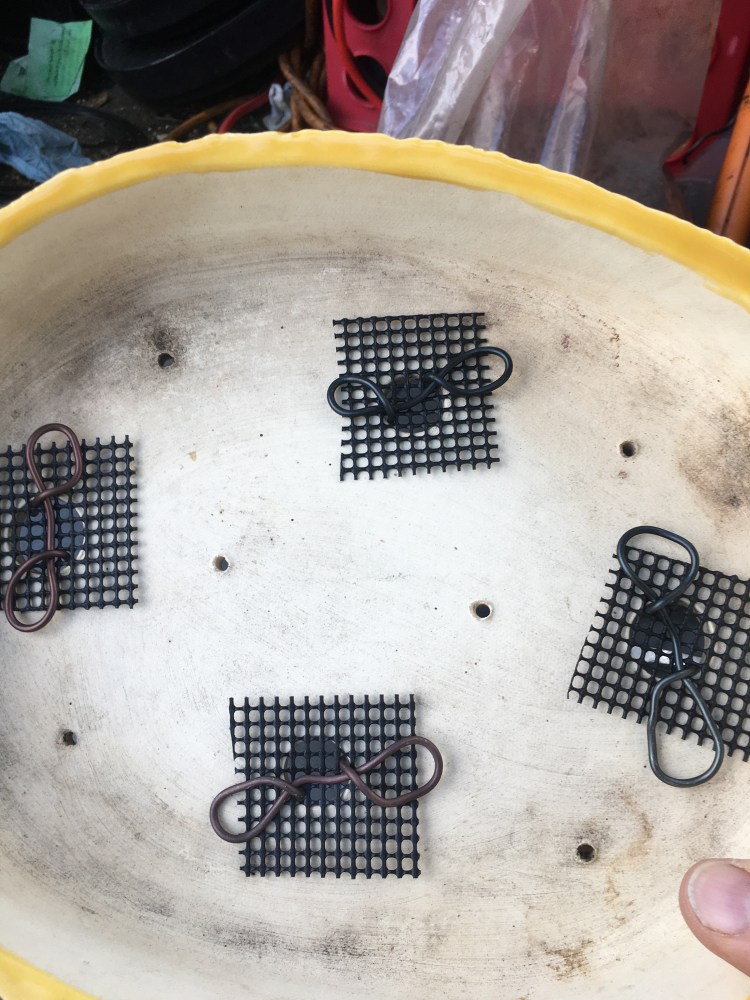
Of course I’m joking. Just secure the mesh. It keeps the soil in and the bugs out. Who cares how it’s done (but if you use my method, there’s the issue of a small licensing fee per hole. There is a discount if you purchase a year long usage license…)
Now I always tie down the tree into the pot. This is proper technique. 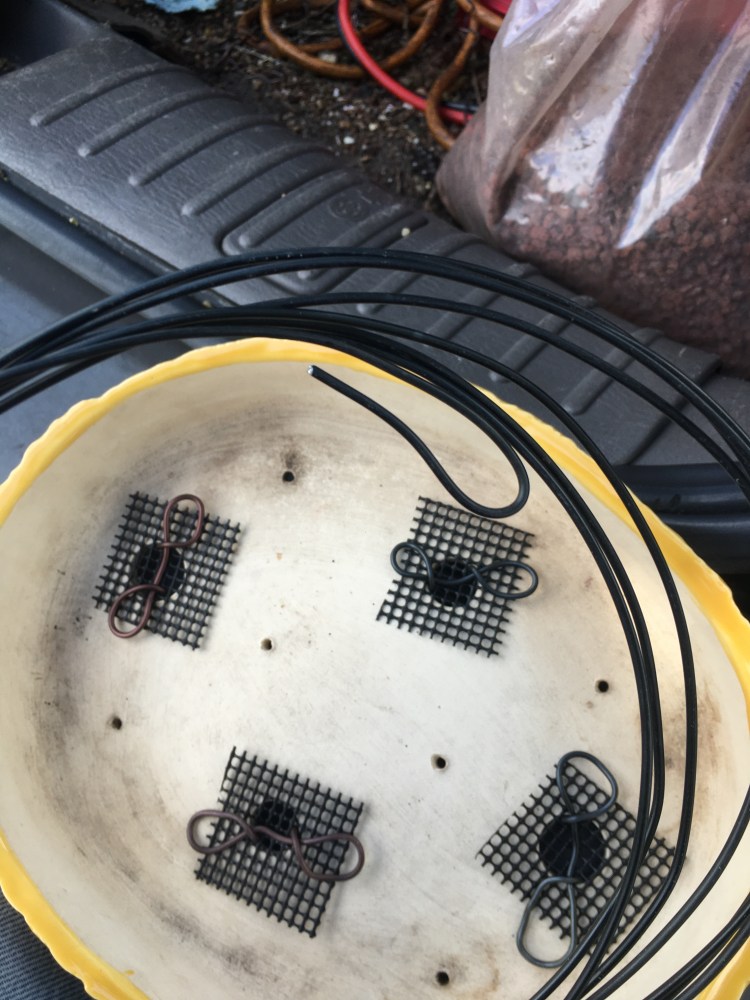
How you do it though, doesn’t matter, except that it has to be secure, so the tree doesn’t move and damage new emerging roots. 
I’ll use whatever method works with whatever tree I’m tying down. 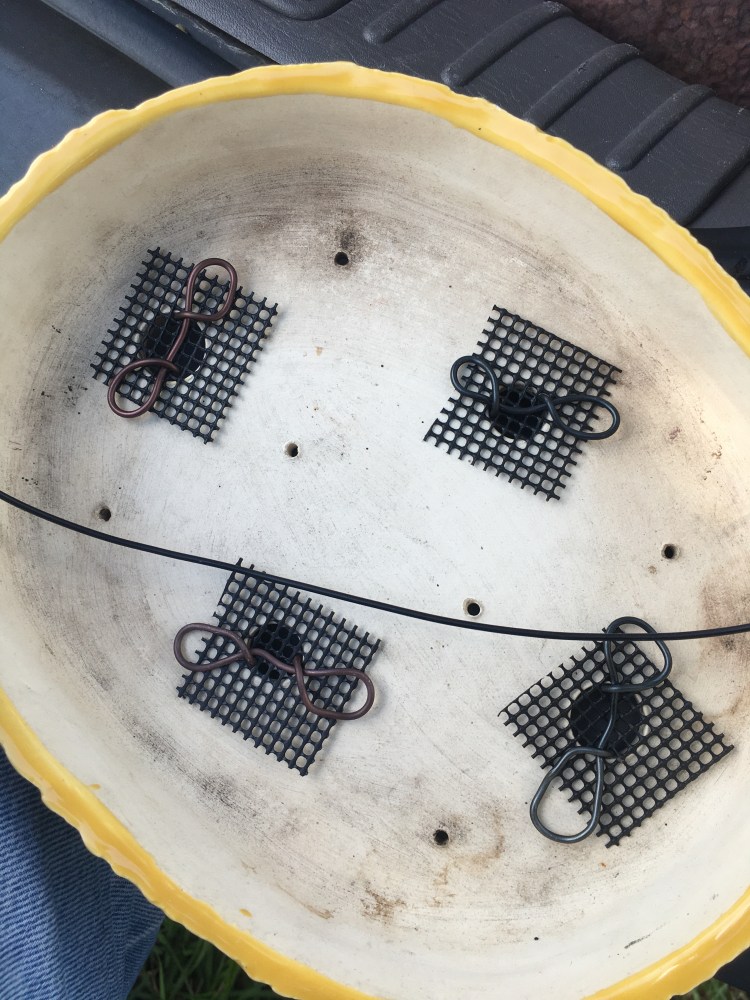
And those techniques are varied and some work better than others. 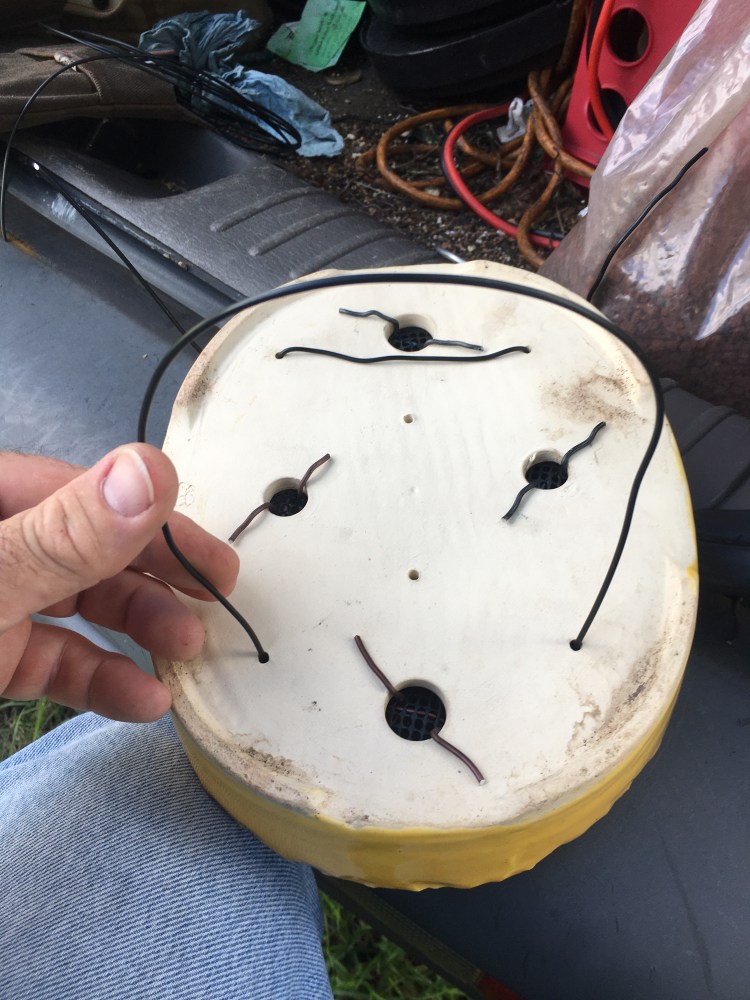
There we go. I’m just going to tie the wires over the roots diagonally. 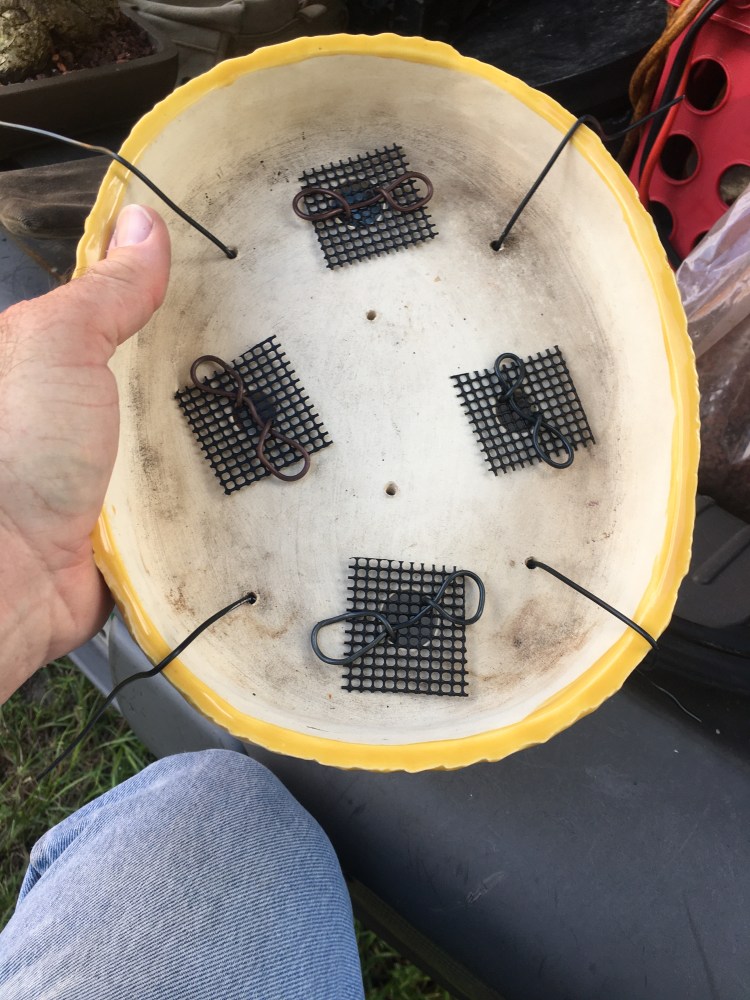
Some soil…..
Yes, it’s just red scoria, or lava rock. That will work in a pinch. Just be aware that you’ll need to water and fertilize more with this simple of a mix (my usual mix can be found here , with an explanation of why I use each component)
The willow leaf ficus in its old pot. 
Whats the difference between a true repot and a slip pot? 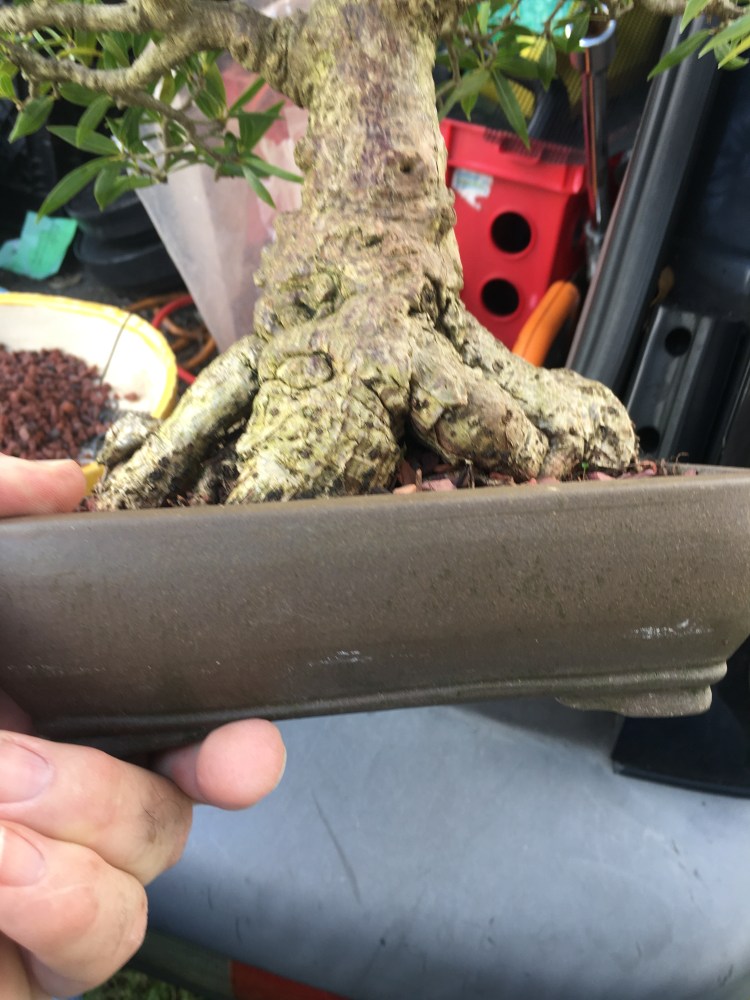
I know. It seems like an awful lot of rabbit holes to travel through to get to the real reason for this post, right? But you had fun, admit it…
A repot means you rake out all the roots, cut back the too thick and too long ones, and stick it into the pot with almost all fresh soil.
A slip potting? You, quite literally, slip it out of the previous pot, and place it into, generally, a larger pot, with as little disturbance of the existing roots as you can manage. 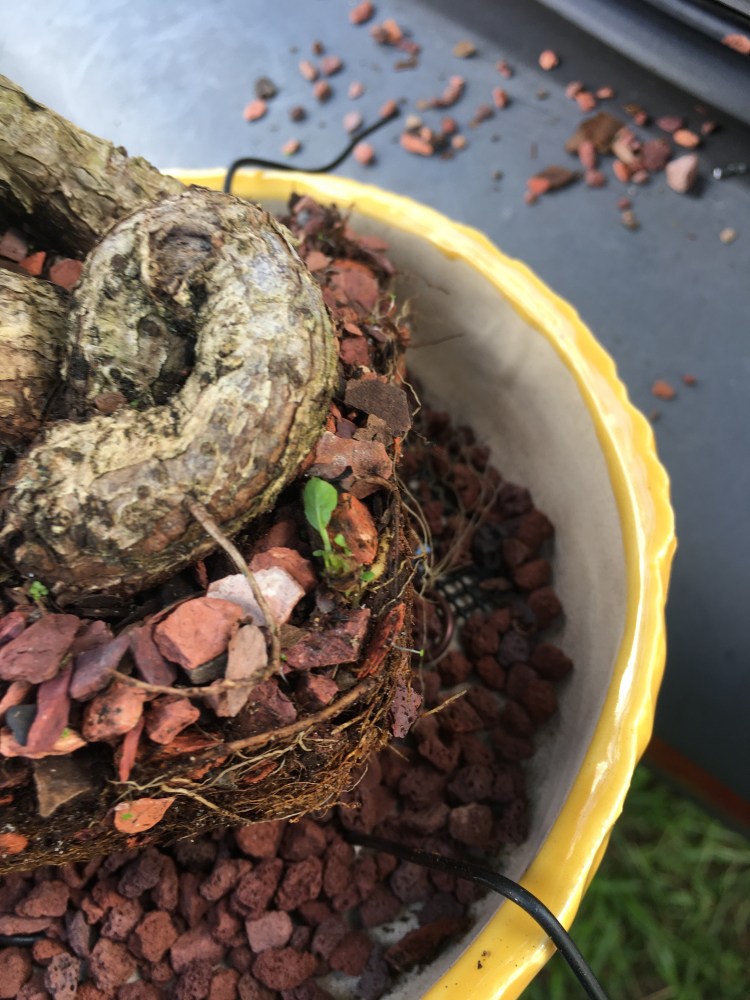
Like so…..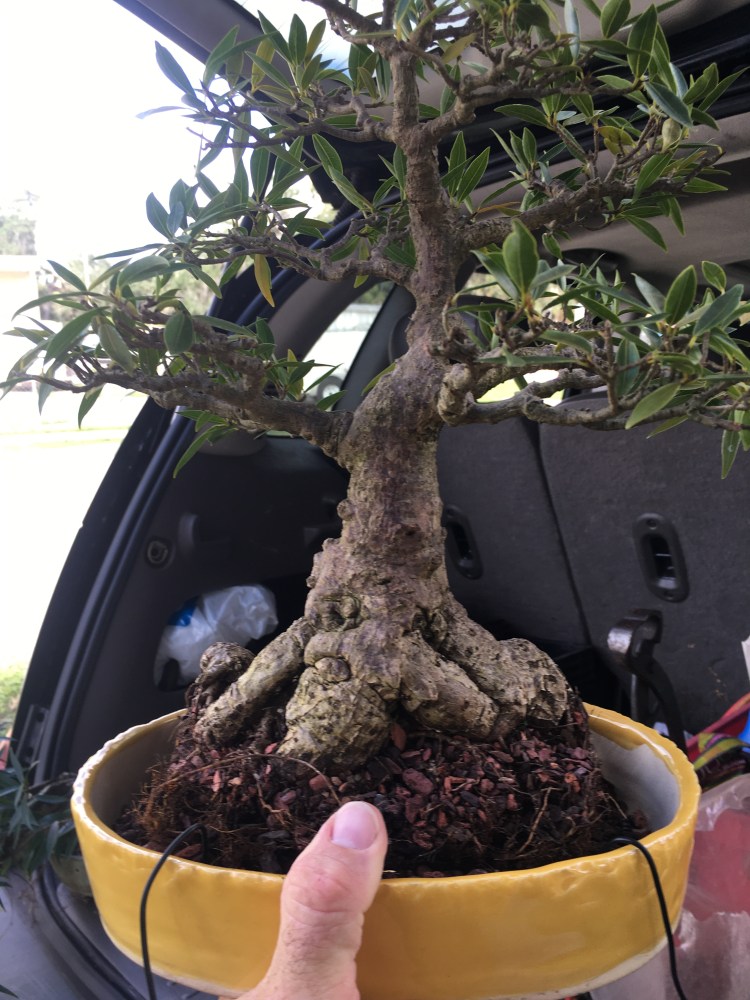
As I said, I’m doing the simplest tie down method, but the most secure, a wrap around the roots. 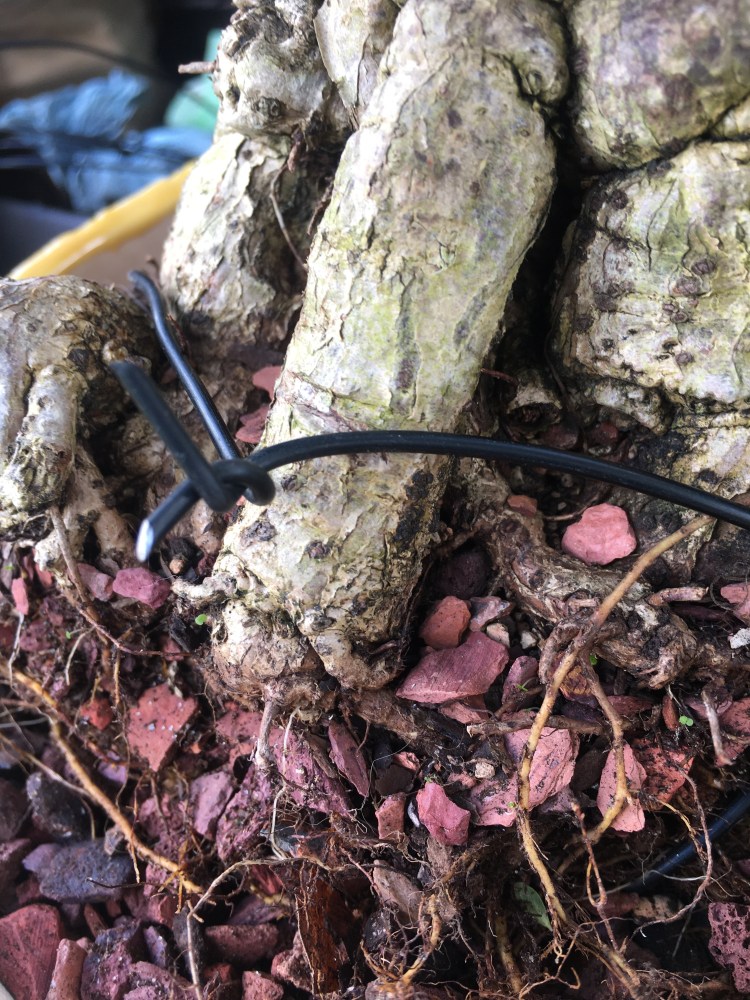
Plain, easy, secure…..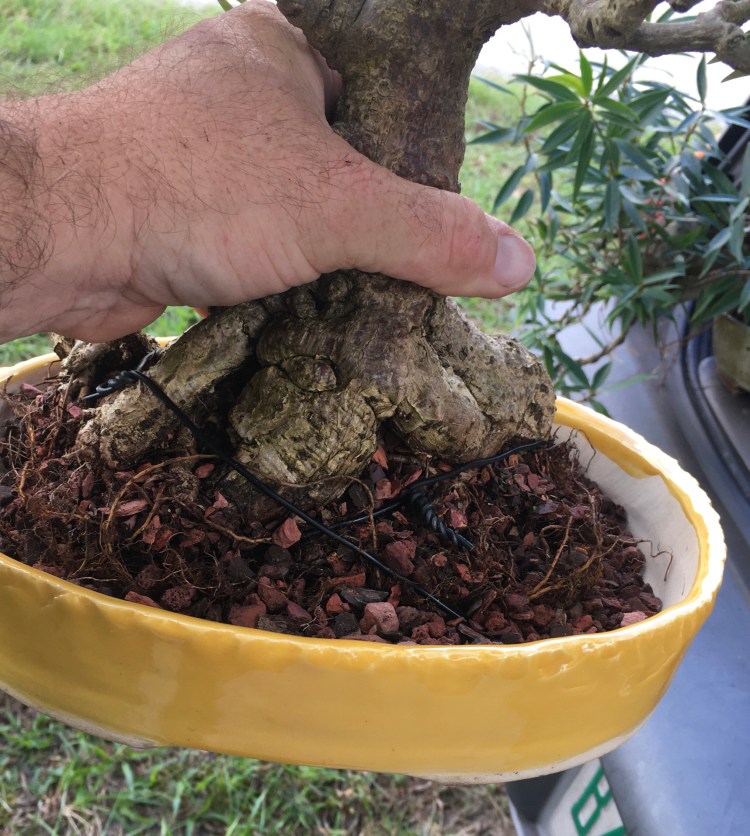
It’s ugly, if you need to hide the wires, but the tree won’t go on display anytime soon, so the horticultural requirements supersede the aesthetic considerations this time. 
Gently, using a chopstick, you can try to fill in the new soil mix into the older mix. But gently. 
Now we are ready for picture time! 
Off to the photo shoot!
Pretty right? I know that many of my readers just got snow. We are still green and lush here in Florida. 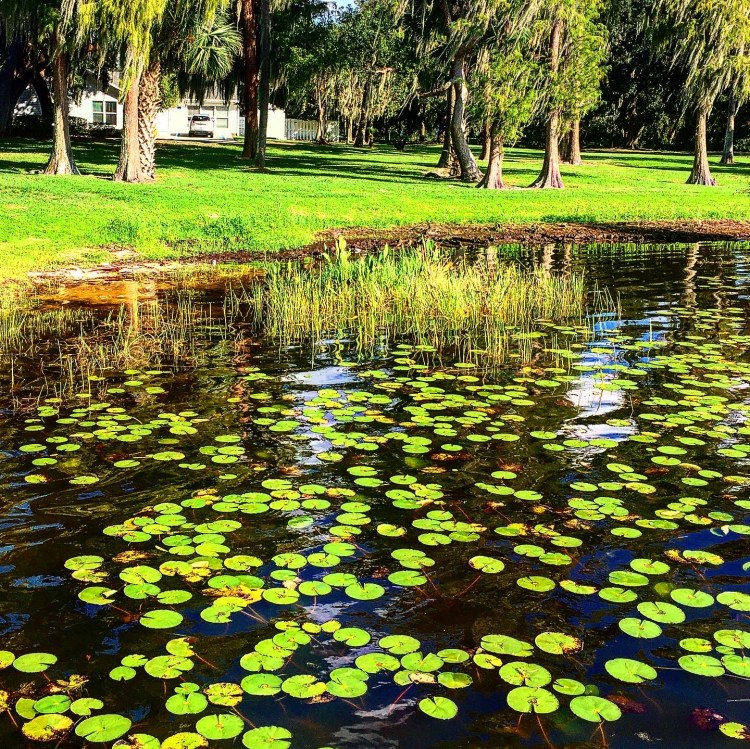
The park my daughter and I went to is called Cypress Grove Park, in a little town next to Orlando called Edgewood.
Here is my photo using the concepts she is learning in her photography class. 
You know, it kinda looks like an old cypress tree….
After all that, here is her photo she’s submitting for her assignment:
Yeah. I’m not even in it, nor is my newly slip potted tree. Jeez.
Ah, the trials and troubles of the most handsome internet bonsai blogger in the free world, I can’t get any respect from my own children.
Ah well, the tree looks good.
You are one funny f……Love your post, love your humour, information, blah, blah blah. Hope your daughter gets A+++++ or whatever it is these days. Yes, I’m writing this in the southern hemisphere where I have fallen into my chair in front of a fan to cool me off. Aaaahhhhh, the tropics…..Cheers Adam.
LikeLike
After all that, I am curious where the focal point is in your daughter’s photo? Her camera has a great filter– it’s a beautifully crisp and clear scene!
LikeLike
Great post! I learned this technique from one of your old post, and I have applied it the several of my trees with great success.
Also, what would be your advised about a mount island focus that’s too tall and 5 inches wide. The upper part is the one I’m interested about; and I’m not sure if ”trunk chopping” vs air layering? Thanks!
LikeLike
If you want the top more than the bottom, air layering is the way to go. A cutting isn’t 100%
LikeLike
How sharper than a serpent’s tooth.
Nice post tho.
Zack Clayton There is a rock in the stream, does the water go through it on its way to the sea? None-the-less, it goes to the sea.
LikeLike
Thanks
On Thu 7 Nov, 2019, 4:47 AM Adam’s Art and Bonsai Blog, wrote:
> adamaskwhy posted: “We just had our annual Multi-club Picnic and Auction > here in Central Florida (I like to call it the Auction of the Five Clubs, á > la Tolkien ) As has become my tradition, I tend to buy a tree from a > friend, Gail, before the auction begins. I know, it’s no” >
LikeLike